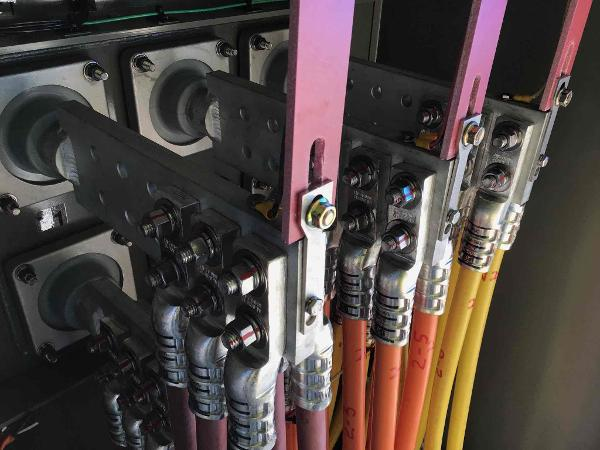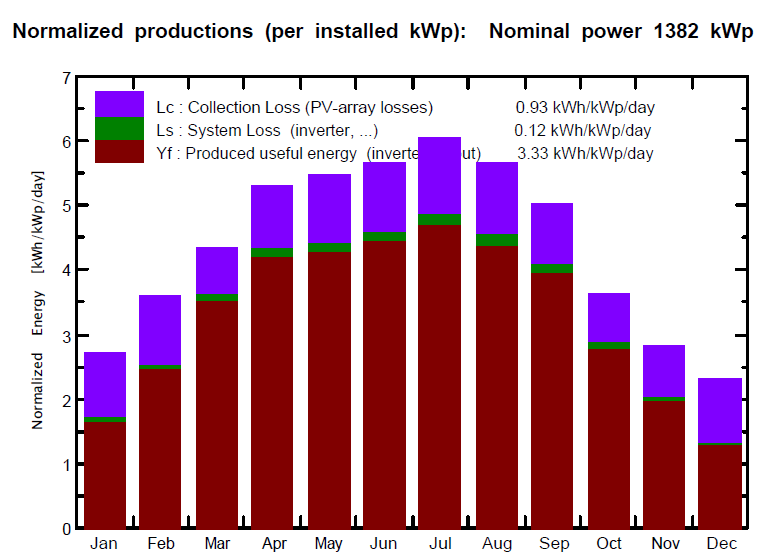Torque is a commonly used term in Solar PV system inspection, which refers to the act of tightening a mechanical fastener. The fastener can cover a wide array of details, not limited to attaching structural members, electrical connection and weather...
Continue ReadingLatest Discussions
Conducting technicaldue diligencebefore a purchase/acquisition is essential for reducing risk and operating expense.
Continue Reading →Pure Power has been helping buyers de-risk in their asset acquisition with ourOwner’s representativeandIndependent Engineeringservices. We specialize in the technical due diligence and operation, allowing you to focus on the financial and...
Continue Reading →Spring cleaning also applies to solar! After harsh exposure to winter’s snow, ice, and rain, systems benefit from routine inspection and maintenance. This ensures performance will be optimal as the season progresses.
Continue Reading →A Photovoltaic (PV) System may change hands multiple times over its 20+ year operational lifespan. The buyer and seller in each transaction may view the same project or portfolio from very different perspectives. Simply put, the seller will...
Continue Reading →Unlike conventional PV modules that convert only front-side irradiance into electrical power, bifacial modules convert both front- and back-side irradiance into electricity. While the additional rear-side irradiance improves plant performance in...
Continue Reading →The basic goal of ASTM E2848, “Standard Test Method for Reporting Photovoltaic Non-Concentrator System Performance,” is to compare the ratio of a PV power plant’s actual in-field performance to its expected performance based on a system model. The...
Continue Reading →In recent years, an increasing number of clients have come to Pure Power Engineering for assistance repowering legacy solar PV and energy storage systems. A fundamental goal of repowering is to replace underperforming or obsolete equipment while...
Continue Reading →Roughly 80% of Pure Power’s customers have some level of internal engineering capabilities. Judging a book by its cover, this vast majority may seem counterintuitive. After all, why would engineering, procurement and construction (EPC) contractors...
Continue Reading →Bifacial PV modules convert both front- and back-side irradiance into electricity. This bifacial boost improves solar project performance both in terms of yield and the levelized cost of energy (LCOE). Due to these benefits, bifacial PV modules are...
Continue Reading →What is a "Neutral" conductor?
To an Engineer: A "neutral" is a current-carrying conductor that carries the unbalanced current in 3 phase systems, and is intentionally connected to the ground. In North America, the neutral is color-coded white or...
Continue Reading →Carports and canopies are the most expensive type of racking or PV module support structure. Therefore, its critical to optimize equipment selection and value engineer these projects.
Continue Reading →A principle goal of value engineering is to deliver long-term performance and reliability at the lowest cost practicable. One effective way to reduce the levelized cost of energy (LCOE) in large-scale or commercial and industrial (C&I) solar...
Continue Reading →As interest in stationary energy storage grows, it is tempting to assume that energy storage systems (ESS) in general—and battery energy storage systems (BESS) in particular—will follow a similar growth curve as solar photovoltaics (PV). In this...
Continue Reading →Power engineering is a broad electrical engineering field that covers all aspects of the bulk electric power system, including power generation as well as transmission and distribution. As a full-service engineering firm specializing in photovoltaic...
Continue Reading →Effective grounding in photovoltaic (PV) systems is the creation of a low-impedance reference to ground at the AC side of the inverter—or group of inverters—that is designed to be compatible with the distribution network’s requirements and existing...
Continue Reading →Pure Power performs many types of power system studies, and the Arc Flash Study may be the most important because it is all about worker safety. However, since it’s not always a code requirement and doesn’t have a direct impact on generation, it is...
Continue Reading →Pure Power performs many types of power system studies, and the Arc Flash Study may be the most important because it is all about worker safety. However, since it’s not always a code requirement and doesn’t have a direct impact on generation, it is...
Continue Reading →EV chargers currently come in three different models: Level 1, Level 2, and Level 3. Level 3 is also commonly known as Direct Current Fast Charging (DCFC). In Level 1 & 2. the EV is connected to AC power, 120V or 240V, and a battery charger in the...
Continue Reading →How does Pure Power keep its stellar reputation year after year? Simple… our team stays together and gains more experience every year.
Continue Reading →NEC 2017 brings with it some advantages and disadvantages. The new rapid shutdown rules that require MLPE are the biggest change (that is an advantage for safety, but disadvantage for project costs).
Continue Reading →Pure Power is looking to add more A-Players to our team. However, they are few and far between, so we need your help! If you refer us to a candidate and we hire them, we will send you a $1,000 Amazon gift card!
Continue Reading →Developers of solar projects are facing the question…what are you doing to prevent the issues Walmart encountered?
Continue Reading →There are many things about EVs that are similar to an internal combustion engine (ICE) powered vehicle, but there are also some important differences and some less understood equivalencies. In this article, I will discuss some of these comparisons...
Continue Reading →The ac collection system in commercial roof-mounted PV systems generally extends from the inverter ac output terminals to the low-voltage point of interconnection (POI). The exception is when the system interconnects at medium-voltage levels, in...
Continue Reading →We often see the 3 mistakes below being made on many solar projects. These mistakes have an effect on the long term operation, quality, and safety of the system. Perhaps since they don’t have an immediate effect on project closeout, it's not on the...
Continue Reading →With 21 engineers between our NJ, CO, and CA offices, we have unmatched bandwidth to design your solar & energy storage projects fast. What does that mean for your project? Quick turnaround time from quality engineers means you can complete your...
Continue Reading →This is a simplified version of my previous article on the new Rapid Shutdown codes taking effect on January 1, 2019. For those interested in the technical details of the code, refer to 2017 NEC 690.12 Rapid Shutdown – Important Changes.
Continue Reading →The 2017 National Electric Code (NEC) dramatically changes the requirements for "Rapid Shutdown of PV Systems on Buildings." Half of the states already adopted NEC 2017 and several more will in the next few months (such as NJ and CT), so you can’t...
Continue Reading →Its common knowledge that Aluminum (Al) conductors cost less than Copper (Cu). But how big is the difference in price? The answer may shock you.
Continue Reading →Our first article 2014 NEC 690.12 Rapid Shutdown for String Inverters on Flat Roofs we explained the basics of implementing a rapid shutdown system using string inverters on a roof. In that article, we gave a simple example of a single array.
Continue Reading →The 2014 National Electric Code added a new section of code 690.12 requiring "Rapid Shutdown of PV Systems on Buildings". Below is the first of 1 of 2 articles we put together to help you understand this code (here is the other: 2014 Rapid Shutdown...
Continue Reading →In a previous article “The 120% Rule Explained – 2011 NEC 705.12(D)(2)” we clarified the philosophy of the 120% rule for load (supply) side interconnections of solar PV systems. The 2011 code was clean, understandable, and easy to safely apply.
Continue Reading →480 to 208 Transformers are commonly needed to step down 480V inverters for 208V services. Unfortunately electrical rooms are often crowded with existing equipment. Sometimes there isn’t room for a transformer, so we are often forced to locate the...
Continue Reading →Here is something that’s crazy, and yet we completely understand why they did it. Some evil genius put duct tape around the vents of a NEMA 3R transformer. If this transformer is heavily loaded it runs the risk of overheating, but at least snow cant...
Continue Reading →Everyone knows about the 120% rule, but not everyone understands the situation it is trying to protect against. This article will explain Pure Power’s philosophy on the 120% rule.
Continue Reading →Pure Power engineered a rooftop solar PV system with an innovative new method for mounting string inverters. The inverters are mounted on strut stands directly over cable tray, and the AC and DC wiring is all neatly and compactly run in the cable...
Continue Reading →Im not sure which of these photos is the scariest...
Continue Reading →Thermal (IR) cameras are a great tool for preventative maintenance and inspection of your PV system. With a little thermography “know-how” and some image focusing, problems can be discovered quickly before they create a fault or safety hazard in the...
Continue Reading →On this system, the installer stacked ballast so high that it shades the modules at noon of each day. Why would anyone use a hollow block for ballast?
Continue Reading →This photo is an excellent example of an inverter installation on the roof. Keeping the inverters next to the array allows the unfused string wires to be kept at a minimum length, increasing safety. Notice how the inverters are tilted to the north...
Continue Reading →We were called out to investigate a performance issue at a site, and were shocked to see this wire management. We suspect the AHJ made this contractor install physical protection after the strings were installed, which is why the contractor cut the...
Continue Reading →Just when I thought I have seen it all... Notice the mid-clamp that was never attached because the module was raised off the rail. Scary!
Continue Reading →I appreciate Shoal's new arc fault technology as shown in this advertisement, however I was shocked to see the photo of a man standing on PV modules.
Continue Reading →When you select the wrong transformer enclosure rating, moisture will get into the transformer enclosure and cause faults. NEMA 3R transformers are effective at keeping out rain, but sometimes no snow drifts.
Continue Reading →While conducting O&M on a Satcon 250kW central inverter, we noticed this fan with an object lodged between the blades.
Continue Reading →In a recent project we were able to value engineer a DC combiner feeder by running an overhead line rather than trenching an underground duct bank. The feeder would have been a 175 feet underground duct bank routed across a high traffic driveway...
Continue Reading →In this installation, an AC panel board was located at ground level which combined the AC circuits from string inverters on the roof. We wanted to avoid entering the top of the enclosure with conduits, so a trough was used so that the feeders could...
Continue Reading →During O&M we often find combiner boxes and disconnect switches with water inside them, despite the box being NEMA 4 and fully gasketed, no top or side penetrations, and weather tight connectors properly installed.
Continue Reading →.png)
























.png?width=300&name=Main%20Blog%20Photos%20(1).png)























